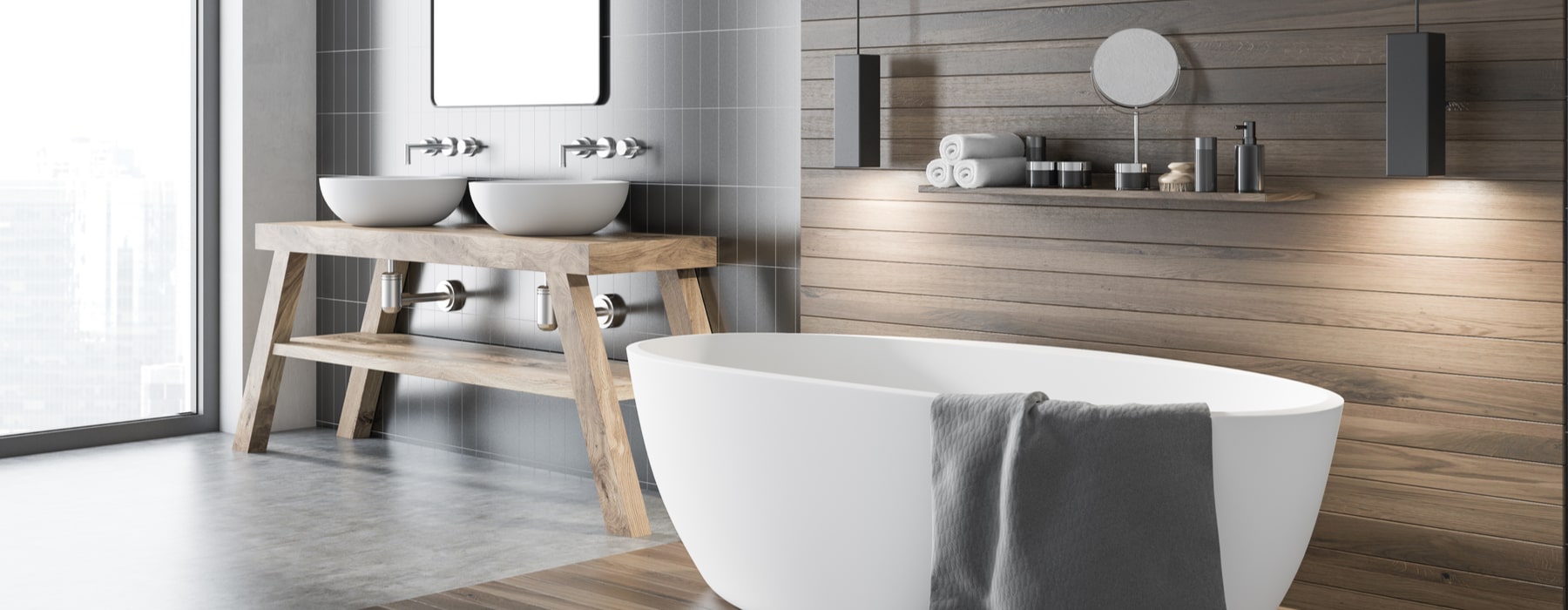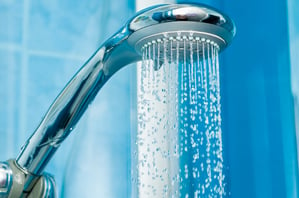Tips for Creating an Eco-Friendly, Sustainable Bathroom

Your bathroom can look fabulous and be environmentally friendly at the same time using both eco-friendly and sustainable methods that protect our world and help you to sleep just a little easier at night.
But, while people often use the words eco-friendly and sustainable interchangeably, it's important to know that there is a distinct difference between these options.
Sustainable Resources
Concrete, glass, steel, stone, and plastic are all examples of sustainable materials. In general, these are materials that we can use in large quantities over a long period of time with planning and development. Sustainable building materials include renewable green materials such as mud, straw, timber, recycled products, and renewable materials.
It’s important to understand that sustainable materials do not necessarily mean eco-friendly or green materials. Just because a material is sustainable does not mean that it is necessarily also eco-friendly. More so, it is possible to be sustainable and stylish at the same time; simply check out a guide to urinals for some amazing options.
Eco-Friendly Materials
Eco is short for ecology. The term eco-friendly simply indicates that the product will have a positive impact - or at least not have a negative impact - on the planet and living things. Eco-friendly products are renewable, recyclable and do not harm the environment when we use them. This includes developing and manufacturing as well as their end-use.
Now that we have some of the terminology out of the way, here are a few tips you can use when tackling your bathroom renovation. However, make sure to shop around for bathroom renovation quotes and set a budget first; going eco-friendly can certainly save you money, but eco-friendly materials and fixtures can add up if not chosen carefully.
Top Tips for Eco-Friendly, Sustainable Bathrooms
Here are just some of the ways you can reduce your impact on the environment when you make changes to your bathroom.
Reduce the Water Flow
One of the most common ways that bathrooms waste resources is by wasting water – and often a lot of it. One of the easiest fixes for water consumption in the bathroom is to change out high-flowing faucets, toilets, and showerheads.
Showerheads
You can buy an environmentally friendly, low-flow showerhead at any home improvement store. This simple change not only has the ability to add a new look to your bathroom but can also save a lot of wasted water.
The average American shower is fitted with a high flow water head that shoots out an astounding 2.1 gallons per minute. You could greatly reduce wasted water with a new showerhead that is specifically designed for a lower flow rate.

Faucets
Water is wasted everywhere. Many people will run bathroom faucets while they shave and brush their teeth even if it’s not being used. when they do this, water literally goes down the drain! One way to stop wasting water this way is to change out normal faucets with modern motion-sensing faucets. Motion sensing faucets only run if water is needed and this virtually eliminates wasted water from bathroom faucets.
Low-Flow Toilets
It is no secret that toilets waste a lot of water. If you have an old high gallon-per-flush toilet then it’s time to replace it with one that works more efficiently. Today’s toilets work better with less water, so make sure you opt for one that allows you to choose between two different flushing options. This way you won’t use more water than is needed.
Remodel with Natural Materials
Glass, metal, bamboo, cork, and porcelain are all sustainable and very eco-friendly. Using these materials will not only give your bathroom a stunning, unique look but can help protect the environment too. These are materials that can last a long time and they can also be reused, so they hold value for a very long time.
It could mean major changes in your bathroom when you decide to switch out materials, but if you are planning a remodel or renovation anyway, then consider using natural, sustainable materials whenever possible. You will find it will be worth it in the long run.
Radiant Heated Floors
If you are remodeling your entire house then it might make sense to go with a hydro-based system for radiant floors. This way you could put this energy-efficient heating solution throughout your whole house.
When remodeling a bathroom on its own, you can install radiant flooring using the electric version instead. Electric radiant flooring has the benefit of heating a specific room from the ground up. This type of heating is more efficient than old-fashioned baseboard heating and sometimes even more efficient than forced-air due to not having any heat loss from ducting.
Cut down on VOCs
Volatile Organic Compounds (VOCs) are released into the environment by various kinds of materials. Your shower curtain, paint, and other bathroom items may be creating VOCs that are harmful to the environment, causing pollution that is entirely preventable.
- Shower Curtains Bamboo is an eco-friendly option for shower curtains because it both eco-friendly and sustainable. It is also widely available and realistically priced. Additionally, when selecting shower drapes, choosing eco-friendly and sustainable options can significantly reduce VOCs (Volatile Organic Compounds), providing a healthier environment in your bathroom. These drapes, made from materials like organic cotton or recycled polyester, not only contribute to a greener planet but also add aesthetic value to your space.
- Paint Some types of paint are harmful to the environment and to people living in spaces where they have been used. Look for a low- or no-VOC paint – a choice that is better for the environment and the people in it.
Flooring
Let’s take vinyl off the list right away. Vinyl is the opposite of eco-friendly and should not be used by anyone trying to create an environmentally-friendly bathroom. On the other hand, tile and stone are perfect options for flooring material in the bathroom. Laminates are another option if you can find the right manufacturer and a product that is water resistant, bearing in mind that most laminates should not be used in wet areas.
Use LED Bulbs
Consider replacing all the light bulbs in your house with LED bulbs, rather than compact fluorescent light bulbs (CFLs). CFLs were once thought to be a great energy-efficient way to save energy but were later shown to cause environmental contamination due to the toxic materials that are used to make them.

Hopefully, you will put these tips into practice and search out some additional ones that will help you do even more for the environment.

Michael Tobias
Michael Tobias, the Founding Principal of NY Engineers, currently leads a team of 50+ MEP/FP engineers and has led over 1,000 projects in the US
Join 15,000+ Fellow Architects and Contractors
Get expert engineering tips straight to your inbox. Subscribe to the NY Engineers Blog below.


